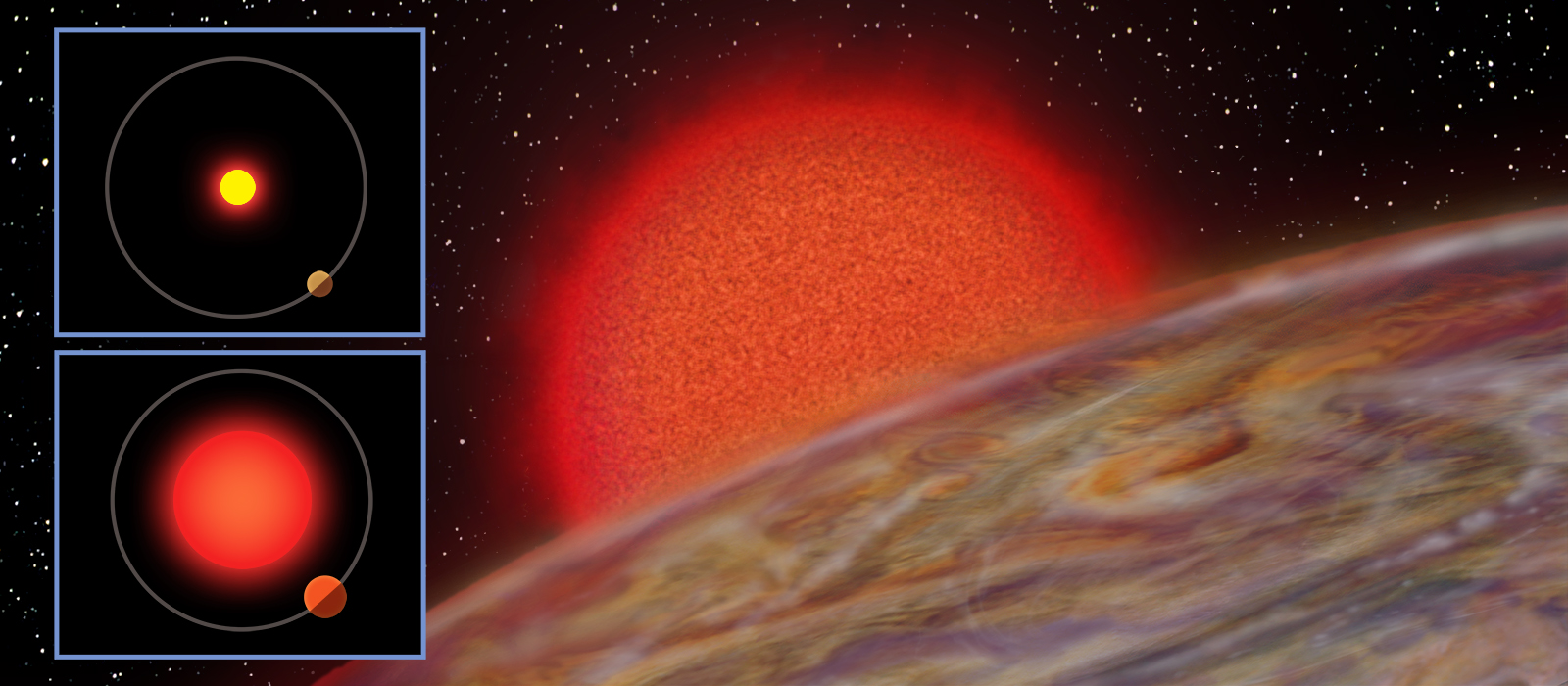Why Huge 'Hot Jupiter' Alien Planets Are So Puffy

"Hot Jupiter" exoplanets are puffed up by the intense radiation streaming from their host stars, a new study suggests.
As their name implies, hot Jupiters are gas giants that are much toastier than the big planets in our own solar system. These alien worlds orbit incredibly close to their host stars, in some cases completing one lap in just a few hours.
Hot Jupiters also tend to be quite puffy, with masses similar to those of Jupiter or Saturn but volumes that are much greater. Indeed, some hot Jupiters are larger than small stars. [How Hot Jupiters Defy Theory]
How did they get this way? Astronomers have long suspected that the inflation is linked to heat flowing into hot Jupiters' atmospheres from their parent stars.
"However, since we don't have millions of years to see how a particular planetary system evolves, planet inflation theories have been difficult to prove or disprove," Samuel Grunblatt, a University of Hawaii Institute for Astronomy graduate student who's the lead author of the new study, said in a statement.
The work by Grunblatt and his team may help change that. The researchers analyzed data gathered during the ongoing K2 mission of NASA's planet-hunting Kepler space telescope, looking for hot Jupiters orbiting red giants, which are sun-like stars near the end of their lives that have bloated to many times their original size.
Grunblatt and his colleagues found two such planets, which are pretty much twins despite being born in different systems. Both hot Jupiters orbit their host star every nine days, and both are about 30 percent larger than Jupiter but just 50 percent as massive.
Get the Space.com Newsletter
Breaking space news, the latest updates on rocket launches, skywatching events and more!
The scientists then used models to estimate how efficiently heat from the parent stars is absorbed by the two planets and transferred to their deep interiors. They determined that the increased radiation given off by the stars once they reached the red-giant phase was likely key to the hot Jupiters' dramatic inflation.
Caution is warranted when extrapolating from results based on a sample size of just two. But the new study does suggest that stellar radiation is the driving force behind planetary puffiness, at least for hot Jupiters, team members said.

The study has some applications close to home, the researchers added: Our own sun will turn into a red giant about 5 billion years from now.
"Studying how stellar evolution affects planets is a new frontier, both in other solar systems as well as our own," Grunblatt said. "With a better idea of how planets respond to these changes, we can start to determine how the sun's evolution will affect the atmosphere, oceans and life here on Earth."
The new study was published in the Nov. 27 edition of The Astronomical Journal. You can read it for free on the online preprint site arXiv.org.
Follow Mike Wall on Twitter @michaeldwall and Google+. Follow us @Spacedotcom, Facebook or Google+. Originally published on Space.com.
Join our Space Forums to keep talking space on the latest missions, night sky and more! And if you have a news tip, correction or comment, let us know at: community@space.com.

Michael Wall is a Senior Space Writer with Space.com and joined the team in 2010. He primarily covers exoplanets, spaceflight and military space, but has been known to dabble in the space art beat. His book about the search for alien life, "Out There," was published on Nov. 13, 2018. Before becoming a science writer, Michael worked as a herpetologist and wildlife biologist. He has a Ph.D. in evolutionary biology from the University of Sydney, Australia, a bachelor's degree from the University of Arizona, and a graduate certificate in science writing from the University of California, Santa Cruz. To find out what his latest project is, you can follow Michael on Twitter.









